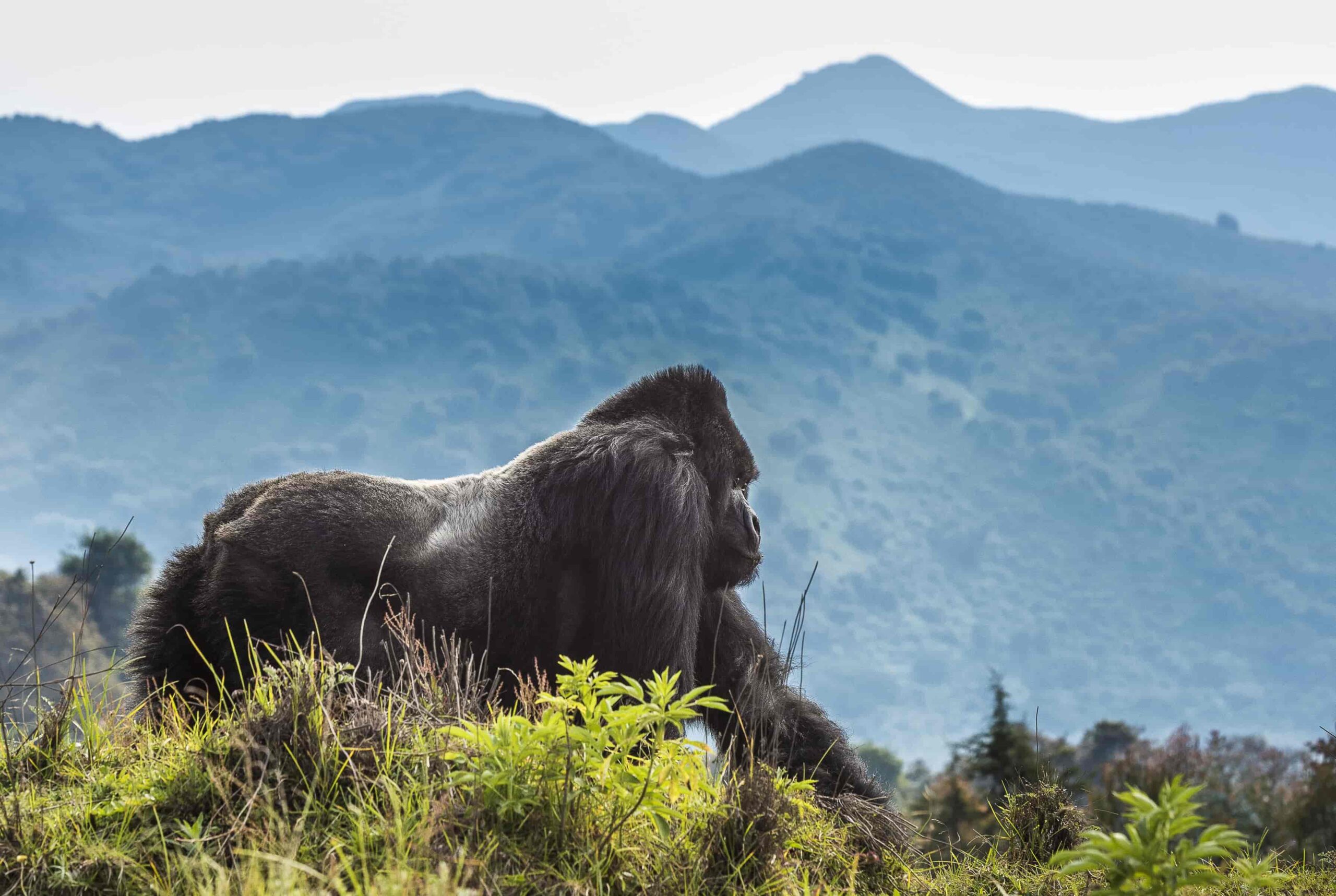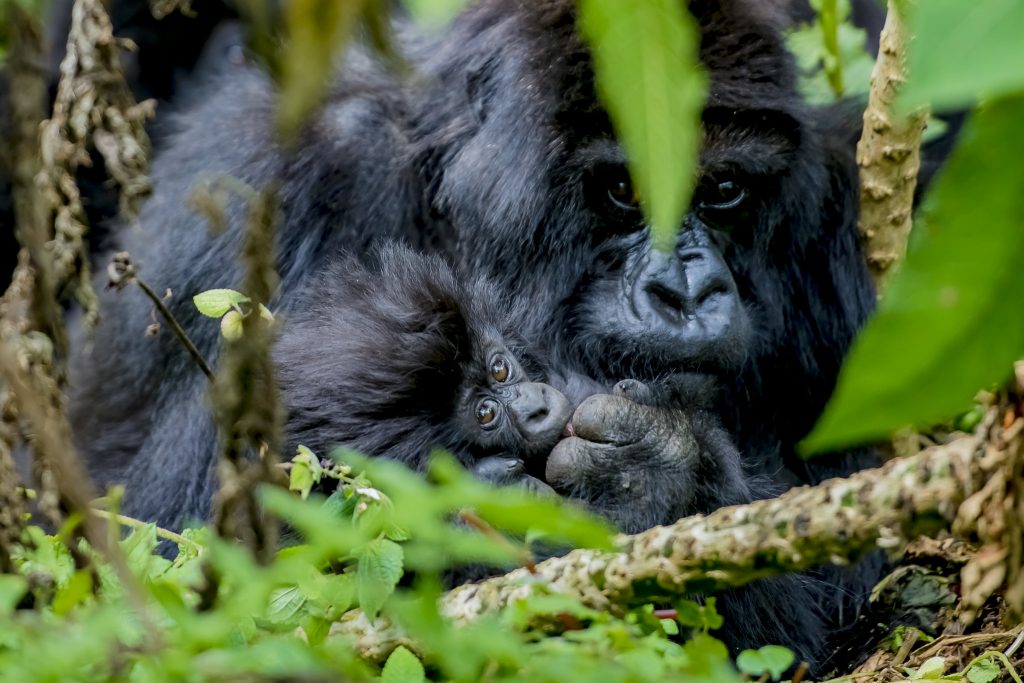Volcanoes National Park in Rwanda, a place of unparalleled natural beauty and ecological significance, has been drawing global attention for its unique biodiversity and conservation efforts. This park, located in the northwest of Rwanda, borders Virunga National Park in the Democratic Republic of Congo and Mgahinga Gorilla National Park in Uganda. The park covers 160 square kilometers and is renowned for its population of mountain gorillas and the spectacular volcanic landscapes of the Virunga Mountains.
Brief History About Volcanoes National Park Rwanda
Established in 1925 as Africa’s first national park, Volcanoes National Park has a storied history in wildlife conservation. Originally created to protect the mountain gorillas from poaching and habitat destruction, the park’s efforts have expanded significantly over the years.

The park’s conservation initiatives were notably championed by the late Dr. Dian Fossey, an American primatologist and conservationist whose work with the gorillas brought global awareness to their plight. Fossey’s legacy continues to influence conservation practices and tourism in the region.
Mountain Gorillas: The Star Attraction
The mountain gorillas are undoubtedly the star attraction of Volcanoes National Park. These majestic creatures, numbering around 600 in the park, have become a symbol of Rwanda’s conservation success. Tourists from around the world flock to the park for a chance to see these gorillas in their natural habitat. The habituation process, which allows humans to safely observe gorilla families, has been crucial in promoting eco-tourism and raising funds for further conservation efforts.
Diverse Flora and Fauna
Beyond the gorillas, the park is home to a rich diversity of flora and fauna. The lush rainforest and bamboo forests are teeming with life, providing habitat for numerous bird species, golden monkeys, and a variety of other wildlife. The park’s biodiversity makes it a key area for scientific research and environmental education.
The Virunga Mountains
Volcanoes National Park is part of the Virunga Massif, a chain of eight major volcanoes. Among them are Mount Karisimbi, the highest at 4,507 meters, and Mount Bisoke, known for its stunning crater lake. These volcanic landscapes offer a range of activities for adventure enthusiasts, including hiking and mountaineering.
The challenging treks provide not only a physical test but also breathtaking views of the surrounding landscapes and opportunities to observe unique geological features.
Hot Springs and Caves
The geothermal activity in the region has also created hot springs and caves, adding to the park’s geological diversity. These natural wonders are not just a draw for tourists but also hold cultural significance for the local communities, often being associated with traditional rituals and folklore.
Eco-Tourism
Eco-tourism plays a vital role in the park’s conservation strategy. Strict regulations are in place to minimize the impact of tourism on the wildlife and their habitats.

Gorilla trekking permits are limited, ensuring that the number of visitors is controlled and that each visit has minimal ecological impact. This approach has proven effective in balancing tourism with conservation needs.
Benefits to Local Communities
The revenue generated from tourism has significantly benefited the local communities. Investments in infrastructure, healthcare, and education have improved the quality of life for many residents. Additionally, community-based tourism initiatives have empowered locals, providing them with opportunities to participate in and benefit from the tourism industry.
This has fostered a sense of ownership and responsibility towards the park’s conservation.
Poaching and Habitat Loss
Despite the successes, Volcanoes National Park faces ongoing challenges. Poaching and habitat loss continue to threaten the wildlife. Efforts to combat these issues include increased patrolling, community education programs, and stronger legal frameworks to protect the park’s resources.
The collaboration between the government, NGOs, and local communities is crucial in addressing these threats.
Climate Change
Climate change poses a long-term threat to the park’s ecosystems. Changes in temperature and rainfall patterns can affect the habitats and food sources of the wildlife. Research and adaptive management strategies are needed to mitigate the impacts of climate change on the park’s biodiversity.
Volcanoes National Park stands as a testament to the potential of conservation efforts and sustainable tourism. Its success in protecting the mountain gorillas and preserving the unique volcanic landscapes has made it a model for conservationists worldwide. However, continuous efforts are required to tackle the ongoing challenges and ensure that future generations can also experience the wonders of this remarkable park.
As Rwanda continues to develop its tourism sector, the lessons learned from Volcanoes National Park will be invaluable. The balance between conservation and community benefits is delicate, but with commitment and collaboration, it is possible to achieve sustainable outcomes. The park’s future, and the future of its iconic mountain gorillas, depends on these sustained efforts and the global community’s support in preserving one of Africa’s most precious natural treasures.
